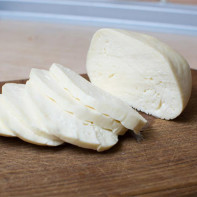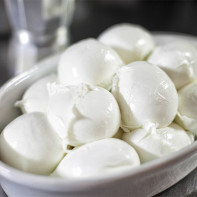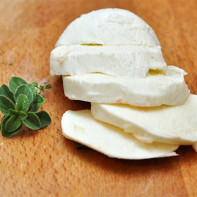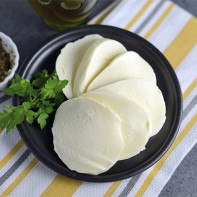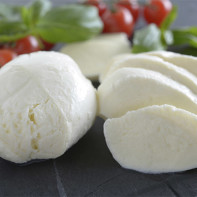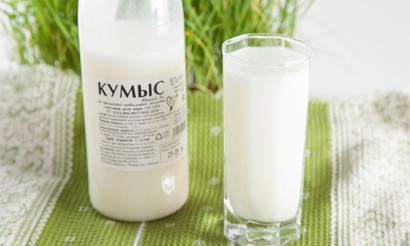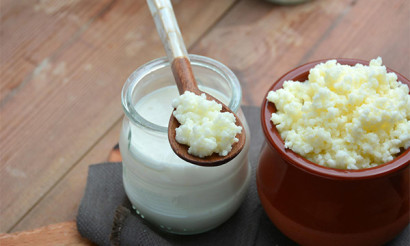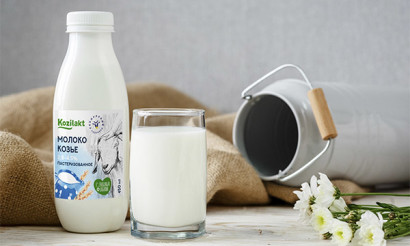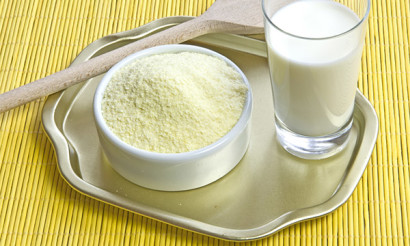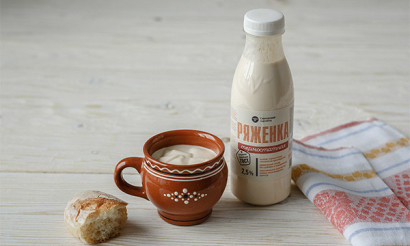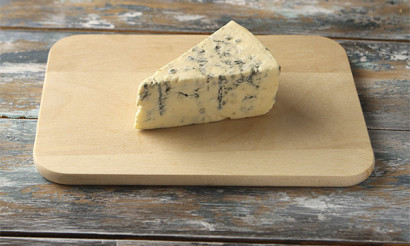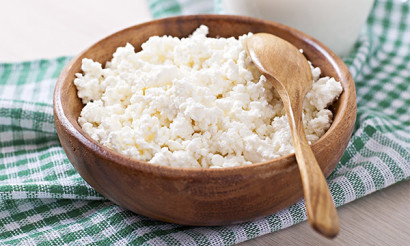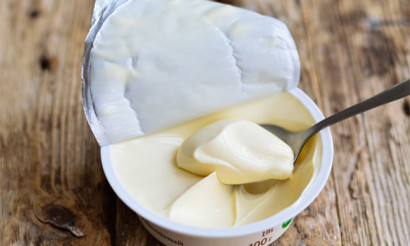Mozzarella Cheese: Health Benefits
Mozzarella is a culinary invention that has gained wide popularity among gourmets around the world. For more than 7 centuries, cheese has managed to go from a product used by pilgrims and nomads to a dish without which virtually no festive event is complete.
- What is mozzarella
- Kinds
- What is the difference between mozzarella and suluguni
- Composition and calorie content
- What is useful mozzarella cheese
- General benefit
- For women
- For men
- During pregnancy
- When breastfeeding
- For kids
- When losing weight
- Mozzarella in medicine
- With diabetes
- With pancreatitis
- With gastritis
- Harm and contraindications
- How to choose and store mozzarella cheese
- Is it possible to freeze
- How to make mozzarella at home
- Why mozzarella does not stretch
- What can be made from mozzarella
- Is it possible to fry and bake
- What is combined with
- Is it possible to drink pickle from mozzarella
- What can be replaced
- Is it possible to eat mozzarella cheese in fasting
- Interesting facts about mozzarella
What is mozzarella
Mozzarella is a soft cheese that came to us from the south of sunny Italy. The very word - "mozzarella" originated on the basis of a modified Neapolitan dialect, from which "mozzare" is translated as "cut off". At home, it is most often used in the preparation of pizza, salads, various snacks and pastas. Mozzarella has a balanced neutral taste and a characteristic structure that allows you to stretch hot pizza. The taste of cheese allowed a dish such as calzone to become extremely popular, and a light appetizer - caprese - to be born.
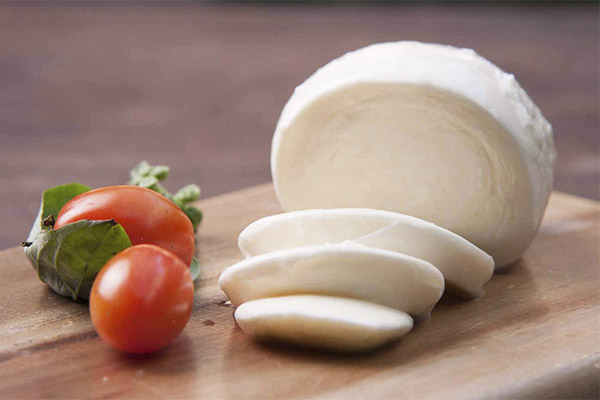
Thanks also to buffalo, whose milk is used to prepare this wonderful tasty product. The first mention of an Italian delicacy was shared with the world by the famous chef who lived in Italy in the Renaissance, Bartolomeo Scappi. In the second half of the 16th century, in his book Opera, he indicated fresh mozzarella as an ingredient in one of the recipes. Probably, indicating this product, among others, he did not attach much importance to it, which, accordingly, gives rise to the idea that cheese was already perceived as the norm even then.
Kinds
According to the shape of the product, it is usually divided into 4 types:
- Traccia is the shape of a pigtail.
- Perlini - in the form of small peas.
- Chileggini - small balls.
- Bocconcini - in the form of large balls.
Cheese is also classified according to grade:
- Classical. It is made only in Italy. The main raw material is buffalo milk.
- Fresh. The main raw materials are cow or goat milk.
- Defatted. The main raw material is milk without cream.
- Smoked. The finished product is being smoked.
What is the difference between mozzarella and suluguni
Mozzarella has a white color, elastic texture, has fibers, smoked product varieties can be found. In Suluguni, the color varies from light milk to yellowish-white, while the color is uniform. There are no crusts on the cheese, layers can be seen. Mozzarella tastes fresher and more delicate; the second type of cheese has salinity. Also, suluguni cheeses, as a rule, have a sour-milk smell.
Composition and calorie content
100 g of product contains:
- calories - 299 kcal;
- proteins - 22.2 g;
- fats - 22.1 g;
- carbohydrates - 2.4 g.
The composition of mozzarella is almost no different from any dairy products. The product is rich in saturated fatty acids, which have a positive effect on the condition of the skin, hair and nails. The cheese contains calcium, phosphorus, sodium, and in large quantities - vitamin B12. In addition, it contains choline, phylloquinone, vitamin A, as well as iron, zinc, copper, selenium and manganese.
What is useful mozzarella cheese
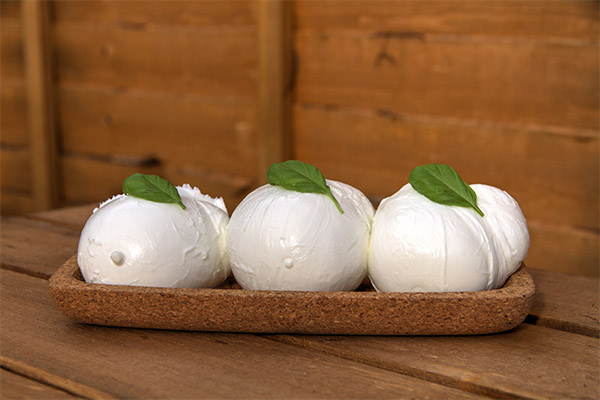
General benefit
- Strengthens the immune system. One of the main reasons mozarella is good for humans is its high protein content. Protein is an indispensable macrocell, on which, in particular, the immune system relies.Antibodies used by the immune system to neutralize pathogenic bacteria and viruses are essentially proteins. In addition, the cheese contains zinc in sufficient quantities. An average adult on a diet of 2000 kcal per day will need about 11 mg of zinc, so only 100 g of Italian delicacy will provide about 20% of the recommended daily intake of this mineral. Adequate zinc intake helps the body stimulate the cells of the immune system and maintain the activity of neutrophils, macrophages and other types of white blood cells. Deficiency of this mineral reduces the response of the immune system and predisposes the body to infection. The product enriches with various vitamins. For example, vitamin A, along with zinc, helps maintain healthy skin and mucous membranes - the nose, mouth, and throat, the areas that are most susceptible to viruses and bacteria.
- Supports and restores muscles. The protein found in mozzarella is an essential substance for muscles. The amino acids that make up it help build and repair muscle tissue. Eating protein-rich foods can help build muscle while losing fat.
- Supports the activity of the nervous system. Amino acids in cheese help synthesize neurotransmitters and directly affect cognitive functions (memory, learning, thinking, attention), as well as mood, appetite, sleep and mental health in general. It is worth noting that the saturated fats present in the product do not have a negative effect on health, if the consumption rate is observed. It contains useful unsaturated fatty acids - omega-3, omega-6 and cholesterol, as well as vitamin B12. While omega-3s and -6s support brain function, cholesterol and vitamin B12 are part of the protective membrane that covers the nerve fibers. Together they provide protection against degenerative diseases of the nervous system, such as multiple sclerosis.
- Benefits for humans with anemia. Vitamin B12 is responsible for the production of red blood cells, which transport oxygen to the muscles. Deficiency of this vitamin increases the risk of anemia, including its symptoms such as pallor, shortness of breath, fatigue, heart palpitations and low blood pressure. Mozzarella is rich in vitamin B12, while only 100 g of the product contains 95% of the recommended daily intake.
- It fights fatigue and energizes. Mozzarella also helps fight fatigue, nourishes and energizes the body. It contains sodium, which helps to increase blood pressure to a normal level (if it was low before consumption). In addition, it contains potassium, magnesium and calcium, three electrolytes that can balance blood pressure, which affects heart health. The Italian delicacy is also rich in proteins and fats, substances that saturate the body with energy.
- Strengthens bones and teeth. Mozzarella is an excellent source of calcium and phosphorus. These substances help strengthen bones and teeth, and also prevent osteoporosis.
- Regulates blood pressure. Subject to moderate consumption of the product, it has a positive effect on the cardiovascular system and helps regulate blood pressure.
- Good for skin. Vitamin A and zinc - substances contained in mozzarella, support the health of the skin and improve its appearance. Vitamin A helps in the treatment of dermatitis and other skin diseases due to its anti-inflammatory properties. In addition, due to its antioxidant effect, vitamin slows down the appearance of wrinkles. Together with zinc, it fights acne and prevents various skin rashes.
- Strengthens eyesight. Vitamin A in cheese supports healthy vision. It has a strong antioxidant effect, providing a long-term effect on the health of the retina.
For women
Women are strongly advised to include mozzarella in their diet, as this product can act as an effective prevention against breast cancer. In addition, cheese will help avoid migraines and headaches. It is important for a modern woman to have enough energy in order to be in time to fulfill all the duties assigned to her. The substances contained in the cheese will help the body more efficiently distribute energy, while converting the accumulated fat into an additional source. It is also worth noting that zinc is present in it - a substance that will help maintain healthy skin.
For men
Mozzarella is useful for men who experience constant mental stress. Cheese will contribute to the control of brain functions, improve cognitive functions. Also, the product will have a beneficial effect on the body of those who are actively involved in sports. Sensations of muscle fatigue will significantly weaken, while the body can withstand more intense and prolonged stress. Mozzarella is rich in protein, which will strengthen muscle tissue and fill with energy. Cheese also has the ability to lower bad cholesterol in the body. This, in turn, helps increase overall stamina.
During pregnancy
Mozzarella belongs to a number of products that can be consumed during pregnancy. Pregnant women have an increased need for vitamin B12 because it helps maintain the development of the circulatory system in the fetus. In addition, the vitamin helps maintain energy levels and fights fatigue. Mozzarella also ensures the normal development of the brain and nervous system of the unborn child.
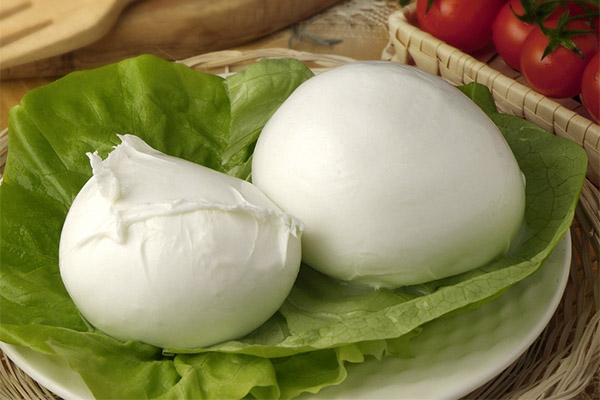
Even despite all of the above beneficial properties of this product, you must ensure that the cheese is made from pasteurized milk, this is especially important during pregnancy. If it is made from pasteurized milk, then it is absolutely safe to consume. Otherwise, pregnant women should exclude it from their diet, since there is a high risk of developing listeria, a disease that can lead to serious complications - miscarriage, stillbirth, and premature birth. When buying, be sure to carefully read the label to know for sure and surely whether the product is pasteurized or not. While in the restaurant, it is recommended to ask the waiter what cheese is used in the dish.
In the case of Listeria, it is important to determine it at an early stage. This infection can go unnoticed for several days or even weeks. Some of the symptoms are very similar to the flu, for example, muscle pain, fever, diarrhea, and digestive discomfort can occur. If you do not deal with its treatment, then the disease can go into a more dangerous phase for health, while severe headaches and cramps begin, stiffness in the cervical spine appears. In this case, you should immediately consult a doctor.
When breastfeeding
Mozzarella is also allowed to be used during breastfeeding. Cheese will help:
- improve the functioning of the immune system;
- strengthen the musculoskeletal system;
- strengthen the nervous system;
- maintain healthy teeth.
It is worth noting that, in addition to the standard contraindications of the product, it has some features that may not affect the baby’s condition in the best way. Mozzarella can have a mild laxative effect, which will lead to a digestive upset in the child. It is allowed to be included in the diet in the first month after birth. In this case, some rules must be observed:
- In the first dose, the portion should not exceed 20 g.
- On the day of the first intake it is forbidden to include other new products in the diet.
- It is necessary to carefully monitor the condition of the baby. In case of digestive disorders or skin rashes, the product must be postponed for at least 30 days.
- A day is allowed to eat up to 50 g of cheese.
- Cheese should not be consumed with meat. This can lead to the fact that the body will not be able to absorb some useful substances, and there will be problems with digestion.
For kids
Mozzarella is an excellent source of milk protein and calcium - substances that can be easily absorbed even by the baby’s fragile body. It has very few salts and histamine, so the risk of allergies is low. Due to these properties, cheese is included in the list of those products that are great for baby food.
It is usually administered from 10–11 months after birth. This will help to avoid oversaturation of the child's body with proteins and minerals. It should be introduced in stages. At the first intake, a child will need only one piece (about the size of a pea) per week. When the baby turns one year old, then grated cheese can already be added to mashed potatoes and omelettes (not more than 25 g). At the age of three, the child’s body will already begin to produce enzymes that regulate the digestive processes, so the baby can be given 1-2 pieces of mozzarella in combination with honey or jam. Cheese should be selected no more than 10 days ago from the date of production. At the same time, it should not contain preservatives, it should consist only of milk and sourdough.
When losing weight
You can use mozzarella for weight loss. However, some rules must be followed. Cheese should be eaten in small quantities, while it is recommended to combine it with herbs, vegetables, fruits or berries, but not with meat. It is quite high-calorie, but at the same time it has fewer calories relative to other cheeses. The substances contained in it are absorbed quite quickly, so they will not slow down the process of losing weight. The product diversifies the standard diet menu. However, it is prohibited for people suffering from glomerulonephritis, renal failure, gastric ulcer and high blood pressure. However, even in the absence of contraindications, it is forbidden to use stale cheese, as this can lead to serious health problems.
Mozzarella in medicine
Although mozzarella is not actively used in the medical field, this product can help in the prevention of many diseases. Cheese is allowed for use during various chronic diseases, which cannot but please people whose diet is, as a rule, very limited.

With diabetes
You can use mozzarella for diabetes. Cheese will fill the body's need for protein, as well as relieve insomnia, improve digestion, which is very important for diabetics. In diabetes, foods containing high amounts of salt should be avoided. This cheese has a little salt, so it can be included in the diet.
Important: the glycemic index of mozzarella cheese is 22 units.
With pancreatitis
In the treatment menu for pancreatitis, mozzarella is allowed to be included. If you choose high-quality cheese, then it will only benefit. The protein in its composition will support the recovery processes in the pancreas. They are also necessary for metabolism and digestion in general. With pancreatitis, salted, fatty, spicy and smoked cheeses are strictly prohibited.
With gastritis
Like any other cheese, mozzarella is forbidden to eat during an exacerbation of the disease, especially in the early days.At the same time, when the ailment weakens, then it is already possible to slowly begin to add non-solid, non-smoked and unsalted cheeses to the patient’s diet. The Italian delicacy is suitable for these conditions, so you can eat it. In the phase of remission, it will be useful to use a fresh product, it will diversify the patient’s menu and help saturate the body with the necessary substances.
Harm and contraindications
Despite the fact that many consider mozzarella to be an absolutely safe product, there are still some limitations regarding its use. For example, cheese is contraindicated in chronic glomerulonephritis and with high blood pressure (hypertension). Attentive to be people with puffiness or kidney failure.
The Italian delicacy is strictly prohibited in case of intolerance to milk protein, while it can not be eaten even in small quantities, since severe allergic reactions can occur (up to Quincke's edema).
How to choose and store mozzarella cheese
Quality cheese has a soft elastic texture and white color. The outer part of the product should be smooth, the inside should be flaky. It is important that it is stored in brine, but some manufacturers simply do not comply with this condition, which can lead to a bitter taste and a solid and dry consistency.
When choosing mozzarella, you must analyze the label - the date of manufacture and expiration date. Usually expired product tastes like sour milk. It is also worth paying attention to the integrity and quality of the packaging. In case of any damage or leaking brine, it is better not to take the cheese.
To save the product, it must be immersed in brine and sent to the refrigerator. Here's how to do it:
- Choose a glass container for the size of the cheese.
- Pour the brine and immerse the product in it so that it completely covers it.
- Put the dishes in the refrigerator.
- You can store up to 3 days.
Is it possible to freeze
The product can be frozen, but it will only make sense if it is done correctly. It is important that he does not lose his qualities during freezing. Before freezing, cheese should be placed in water for some time. This will not allow the product to lose shape and turn into a cheese mass. Then you can put it in the freezer. In this form, it can be stored for about 30 days. After this period, its structure will begin to change, it will lose its taste and useful properties.
When defrosting, cheese should be left for 2-3 hours on the top shelf of the refrigerator. This will allow him not to suffer from a sharp temperature drop.
How to make mozzarella at home

Ingredients:
- milk - 4.5 l;
- water - 300 ml;
- citric acid - 1.5 tsp;
- rennet - 0.25 tsp;
- salt - 1 tsp.
Tools:
- enamel pan (6 liters);
- the spoon;
- a cup;
- accurate thermometer;
- slotted spoon and gauze;
- sharp knife;
- rubber gloves).
How to cook:
- Dissolve citric acid in 200 ml of water (cold), rennet in 100 ml of water.
- Pour milk into a saucepan and put on fire (up to 33 ° C), stirring, pour in citric acid (if milk does not curd, heat to 37 ° C).
- Remove the pan from the heat and, stirring milk, gradually pour in the enzyme. When the enzyme is over, you need to stir the mixture, count to 30, then cover and leave for 5 minutes.
- Check what's in the pan. If the mass is similar to custard, the boundaries of the serum are clearly visible, then you can go to the next step. If this does not happen, then cover the vessel with a lid and wait another 5 minutes.
- Cut the resulting clot into several parts.
- Heat the mass again to 40–41 ° C. Remove from stove and stir for about 5 minutes.
- Using a slotted spoon (you need to lay it in several layers of gauze), separate the cottage cheese from the whey. Place the clot in the microwave bowl and heat for about half a minute.Wear gloves, use a thermometer to check the temperature, it is necessary that it is 60 ° C (if degrees are less, then the heating procedure must be repeated).
- Gently stretch the remaining mass and form it into one large ball or balls. Squeeze the mass in your hands and roll out until a glossy gloss appears.
- Salt cold whey, put balls into it and send to the refrigerator. Keep a maximum of several days.
Why mozzarella does not stretch
If mozzarella does not stretch, then this indicates that the required level of acidity has not been achieved. This usually happens when an insufficient amount of citric acid is added to the dish during cooking.
What can be made from mozzarella
Mozzarella is a must in a large number of traditional Italian dishes. It is used in various casseroles, pizzas, lasagna and pies. Italians can eat cheese in the form of dessert, as well as in addition to pasta, vegetable and meat hot dishes.
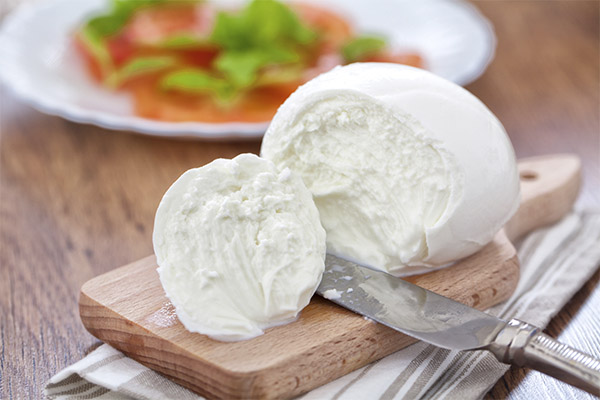
Is it possible to fry and bake
Mozzarella can be fried and baked. In this case, both processing methods are considered traditional. Very simple and tasty snacks come out of fried and baked cheese.
What is combined with
Cheese goes well with basil and tomatoes, as well as with wine (white). It would be acceptable to add ham or olives to it. In Italy, cheese desserts are often complemented with vermouth and berries.
Is it possible to drink pickle from mozzarella
As a rule, they do not drink brine, but use it for baking bread, since it makes the dough more tasty.
What can be replaced
Usually there are 4 types of cheeses that can be replaced with mozzarella:
- feta cheese
- Adyghe cheese;
- Suluguni;
- grain cheese.
Is it possible to eat mozzarella cheese in fasting
It is forbidden to eat cheeses, including mozzarella, during fasting.
Interesting facts about mozzarella
- The best cheese is Mozzarella di Bufala Campana. The product is made from black buffalo milk. It is distinguished by its special elasticity and white-porcelain color. It is important to note that it is done manually.
- Mozzarella is not always made in the form of balls.
- The best quality cheeses are those that belong to the DOP category. They are fairly easy to recognize, because the red-green logo depicts the face of a buffalo.
- Mozzarella obtained from cow's milk is called Fiore di Latte. Some dairies, consortia, and pizza producers still use this old-fashioned term.
«Important: all information on the site is provided exclusively in fact-finding purposes. Before applying any recommendations, consult with a profile specialist. Neither the editors nor the authors are liable for any possible harm caused materials. "

